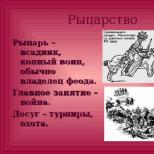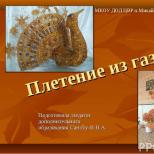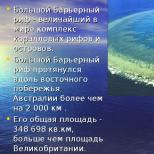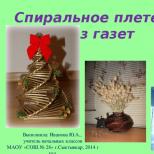The benefits of ants in nature in Sepp Holzer. Sepp Holzer: How to get organic food all year round. Successful farm: crater garden and high ridges
Who is Sepp Holzer? A revolutionary agrarian, a mountain peasant, an entrepreneur, an author of books, a seminar host, a permaculture consultant ... This is a person who is invited to read reports by the most prestigious universities in Europe and America. Author of permaculture projects around the world - in Austria, Scotland (with billionaires Swarovski), Spain, Portugal (ecological settlement Tamera), Latin America. And now in Ukraine and Russia.
Sepp Holzer's Permacultural Projects
Sepp's projects in different parts of the earth, in different climates and in different landscapes are united by the fact that they are all made with a deep love for nature and with a deep understanding of the principles of permaculture. These projects transform rocky semi-deserts, swamps, waste badlands and ravines into blossoming gardens. At the site of an ecological disaster or where farming is difficult, profitable farms appear that grow ecologically clean products and every year they increase the fertility of their land. Holzer has a wealth of discoveries, knowledge of the land and vast experience. He willingly shares his experience and knowledge. He openly tells people and teaches them to “read the book of Nature”.
| Photo 2. Permacultural project in Scotland. | Photo 3. Changing the landscape using heavy machinery. | |
| Photo 4. Permacultural project for the adaptation of disabled people. | Photo 5. Permacultural project in a five-star hotel, Austria. | |
Sepp Holzer is one of the founders of the idea of permaculture. Bill Mollison and David Holmgren (New Zealand) and Masanobu Fukuoka (Japan) also made an important contribution to the development of permaculture. You can read more in the corresponding article on our website.
Sepp Holzer's books and films
Holzer's books have been published in many countries and are very popular. So far, two books have been published in Russian. These are "Agrarian Revolutionary" and "Permaculture of Sepp Holzer. Practical application for garden, vegetable garden and agriculture ”. Both books were translated into Russian by Edward and Angelica Shek. Now (August 2010) the second part of the book "Sepp Holzer's Permaculture" is being prepared for publication. Films about the methods and principles of permaculture and about Holzer himself were shot in different countries. Enthusiasts have translated films about Sepp Holzer and his estate "Krameterhof" into Russian. Now our center is preparing several new films - about the annual course of practical training in permaculture and about Holzer's seminars in Russia.
| Photos of Sepp Holzer's books and videos (not clickable). | |||
Sepp Holzer's Krameterhof Estate
The Krameterhof is a 50 hectare estate nestled on a mountainside in the Austrian Alps. The difference in elevation is 420 meters, the lowest point of the estate is located at an altitude of about 1100 meters, the top - 1500 meters. This place is called Austrian Siberia. The average annual temperature is 4.5 degrees Celsius, which corresponds to the northwest of Russia. But here the weather is more extreme, in July there are snowfalls and hail. It would seem - a harsh land on which little grows. And Zepp's neighbors successfully confirm this with their dull farms, which exist only thanks to subsidies from the European Union.
And what about the Krameterhof? An abundance of fruit trees and shrubs, thickets of original Siberian grain and other cereals, a lot of melons. Lots of ripening kiwis and grapes ... Whole fields of medicinal herbs. Animals and birds feel at ease in this incredible place. It is documented that now the Krameterhof has the largest variety of flora and fauna in Austria.
All this vast farm of 50 hectares is cultivated by only 3 people. Plants are in natural symbiosis and do not need additional fertilizing, watering, or remedies. Birds and animals also participate in the ecosystem of the estate - they live in nature (in specially prepared places) and feed on their own. This saves a lot of effort and money. And the products of the estate are environmentally friendly and of the highest quality. Someone may wonder - how do these animals live on their own? How can it be? Here are some examples. Ducks live in a special house located in the middle of the lake. The entrance to their dwelling is protected by water. First you need to swim a few meters, and then dive into the water to get inside. Predators are not capable of this. After this system was introduced, not a single duck was lost. But what about in winter? Doesn't the water freeze? Yes, the water freezes, but such a natural circulation of water is organized that in the most severe frosts there is a non-freezing space in front of the duck house.
Pigs live in an earthen barn - a special structure that is dug into the ground, due to which it is cool in summer and warm in winter. And chickens live with the pigs! Not a single predator will dare to sneak past the pigs to the chickens at night. Pigs will simply trample such an unlucky insolent person. In general, Sepp Holzer says about pigs: “These are my freelance employees. Pigs are such a self-propelled smart agricultural unit. In front of them there is a powerful harvester, and in the back there is an inexhaustible source of valuable fertilizers. " The pigs in the Krameterhof are digging the soil. How does this happen? In the area intended for plowing, the bait in the form of corn grains is scattered. Pigs plow the ground deep with their powerful fangs and hooves. Then seeds are sown there - cereals, vegetables. A little more corn is thrown, and the pigs are harrowing the site. And that's it! The plot has been dug up, fertilized and sown. No agricultural machinery. All work comes down to scattering seeds over the site several times.
Holzer, focusing on the natural cycles of plant development, managed, for example, to dilute yellow gentian in large quantities. It is a valuable and rare plant that is usually extremely difficult to cultivate. At Sepp's estate, gentian, like other medicinal herbs, grows in abundance.
Aquaculture in the Krameterhof
The numerous ponds of the Krameterhof maintain the water balance and contribute to the creation of the microclimate. Also in them, without feeding and treatment, numerous species of fish are bred on natural nutrition: sturgeon, carp, trout, pike, pike perch, etc. Each pond has a special shape that supports the natural cycle. Coastal and aquatic plants grow intensively. Numerous microorganisms, worms, beetles, snails and other "trifles" feed on them. And already fish feed on them. All that is required is to catch the grown fish.
| Photo 22. Krameterhof lakes. | Photo 23. Krameterhof lakes. | |
| Photo 24. Krameterhof lakes. | Photo 25. An example of a spring in the Krameterhof. | |
You may be interested in Sepp Holzer's permaculture. Previously, the only way to get to know her better was to go abroad. For example, to Austria or to one of Holzer's permaculture projects in other countries. And someone did just that. But it was difficult, expensive and only allowed to touch this amazing phenomenon for a short time. Now our center organizes both introductory and practical seminars on permaculture. And also a one-year course of practical training in permaculture is unique opportunity to study the principles of permaculture in practice and learn how to create your own projects like "Krameterhof".
| Photo 26. Sepp Holzer's Permaculture Seminar. | Photo 27. Sepp Holzer's Permaculture Seminar. | |
| Photo 28. One-year course of practical training in permaculture in Russia. | Photo 29. One-year course of practical training in permaculture in Russia. | |





